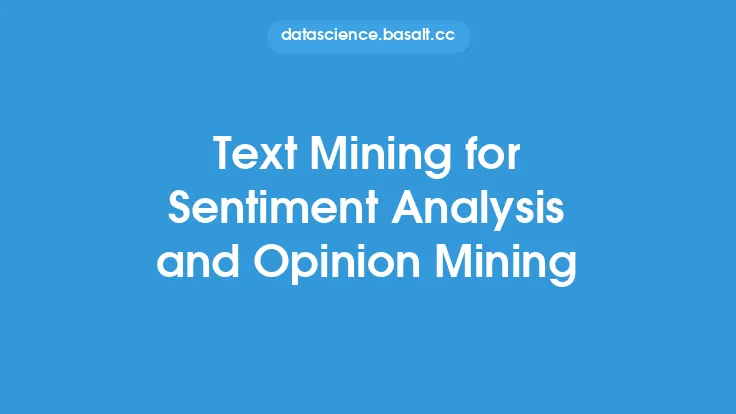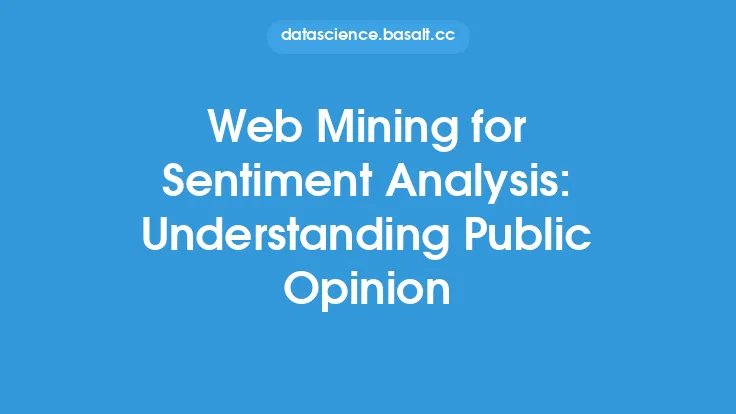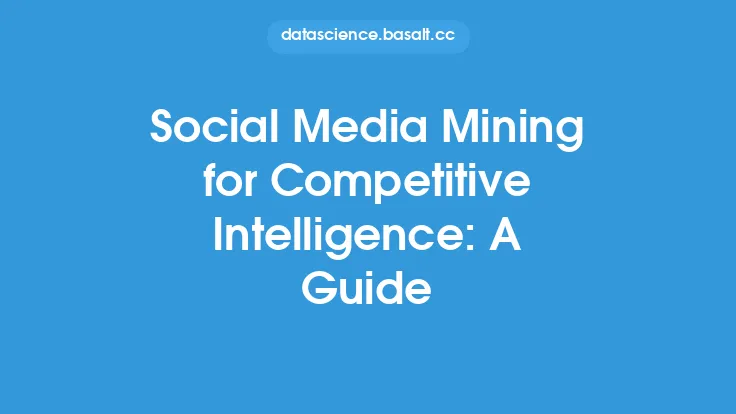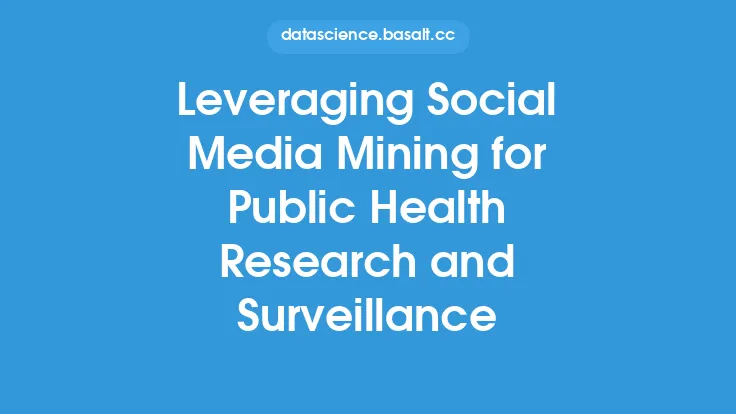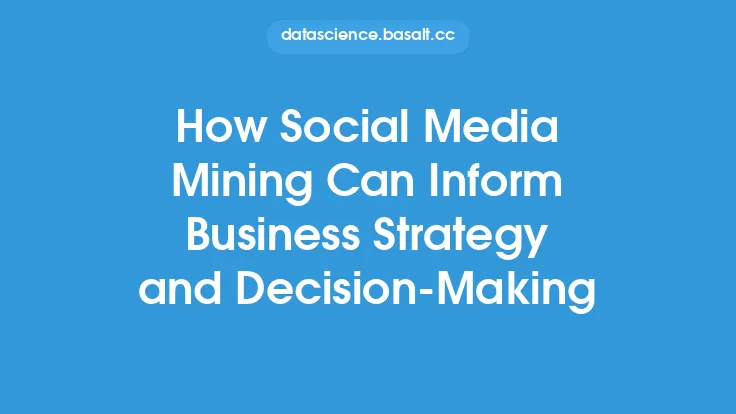The rise of social media has led to an explosion of user-generated content, with millions of people sharing their thoughts, opinions, and experiences online every day. This wealth of information presents a unique opportunity for businesses and organizations to gain insights into customer sentiment and behavior. Customer sentiment analysis, a key application of social media mining, involves the use of natural language processing (NLP) and machine learning techniques to analyze and understand the emotions and opinions expressed by customers on social media platforms.
Introduction to Customer Sentiment Analysis
Customer sentiment analysis is a crucial aspect of social media mining, as it enables businesses to gauge the mood and attitude of their customers towards their brand, products, or services. By analyzing customer sentiment, businesses can identify areas of strength and weakness, track the effectiveness of their marketing campaigns, and make informed decisions to improve customer satisfaction and loyalty. Customer sentiment analysis can be applied to various social media platforms, including Twitter, Facebook, Instagram, and YouTube, among others.
Types of Customer Sentiment Analysis
There are several types of customer sentiment analysis, including:
- Polarity analysis: This involves determining the overall sentiment of a piece of text as positive, negative, or neutral.
- Emotion detection: This involves identifying the specific emotions expressed in a piece of text, such as happiness, sadness, anger, or fear.
- Aspect-based sentiment analysis: This involves analyzing the sentiment expressed towards specific aspects or features of a product or service, such as the quality of a restaurant's food or the comfort of a hotel's rooms.
- Intent analysis: This involves determining the intent behind a customer's post or review, such as whether they are expressing a complaint, making a suggestion, or asking a question.
Techniques for Customer Sentiment Analysis
Several techniques can be used for customer sentiment analysis, including:
- Rule-based approaches: These involve using predefined rules and dictionaries to identify sentiment-bearing words and phrases.
- Machine learning approaches: These involve training machine learning models on labeled datasets to learn patterns and relationships between words and sentiment.
- Deep learning approaches: These involve using deep learning techniques, such as convolutional neural networks (CNNs) and recurrent neural networks (RNNs), to analyze and understand the complexities of human language.
Tools and Technologies for Customer Sentiment Analysis
Several tools and technologies are available for customer sentiment analysis, including:
- Natural language processing (NLP) libraries: Such as NLTK, spaCy, and Stanford CoreNLP, which provide pre-trained models and tools for text processing and sentiment analysis.
- Machine learning libraries: Such as scikit-learn, TensorFlow, and PyTorch, which provide pre-trained models and tools for machine learning and deep learning.
- Social media analytics platforms: Such as Hootsuite, Sprout Social, and Brandwatch, which provide tools and dashboards for social media monitoring and sentiment analysis.
Challenges and Limitations of Customer Sentiment Analysis
While customer sentiment analysis can provide valuable insights into customer behavior and opinion, there are several challenges and limitations to consider, including:
- Noise and ambiguity: Social media data can be noisy and ambiguous, with sarcasm, irony, and figurative language making it difficult to accurately determine sentiment.
- Contextual understanding: Sentiment analysis requires a deep understanding of the context in which a piece of text is written, including the author's intent, tone, and language.
- Cultural and linguistic differences: Sentiment analysis can be culturally and linguistically dependent, with different cultures and languages expressing sentiment in different ways.
Best Practices for Customer Sentiment Analysis
To get the most out of customer sentiment analysis, several best practices should be followed, including:
- Data quality and preprocessing: Ensuring that the data is accurate, complete, and preprocessed to remove noise and irrelevant information.
- Model selection and training: Selecting the most appropriate machine learning or deep learning model for the task at hand and training it on a high-quality dataset.
- Evaluation and validation: Evaluating and validating the results of the sentiment analysis to ensure accuracy and reliability.
- Integration with business strategy: Integrating the insights gained from customer sentiment analysis into business strategy and decision-making to drive customer satisfaction and loyalty.
Conclusion
Customer sentiment analysis is a powerful tool for businesses and organizations looking to gain insights into customer behavior and opinion. By using natural language processing and machine learning techniques to analyze and understand the emotions and opinions expressed by customers on social media, businesses can identify areas of strength and weakness, track the effectiveness of their marketing campaigns, and make informed decisions to improve customer satisfaction and loyalty. While there are several challenges and limitations to consider, following best practices and using the right tools and technologies can help to ensure accurate and reliable results.
